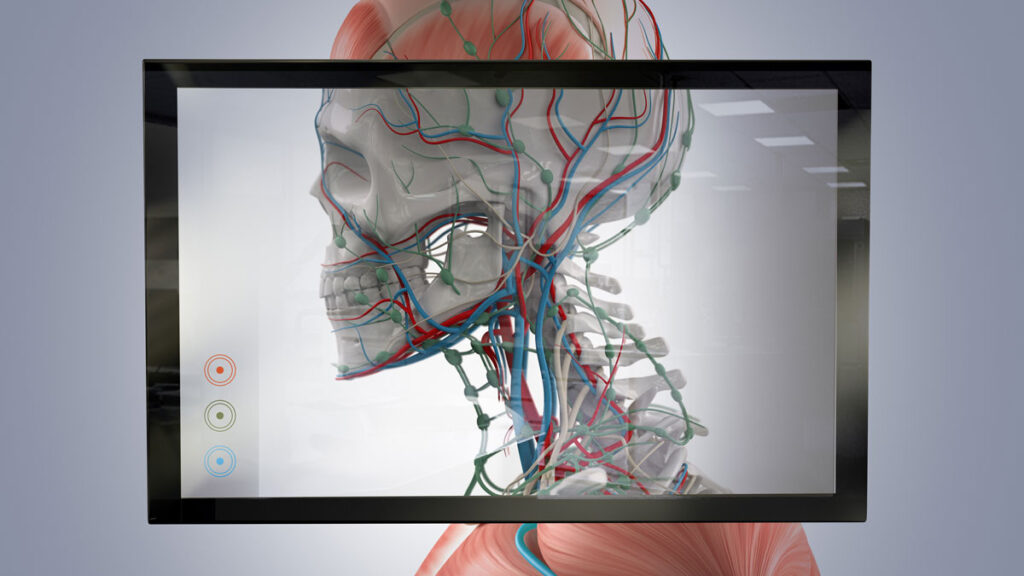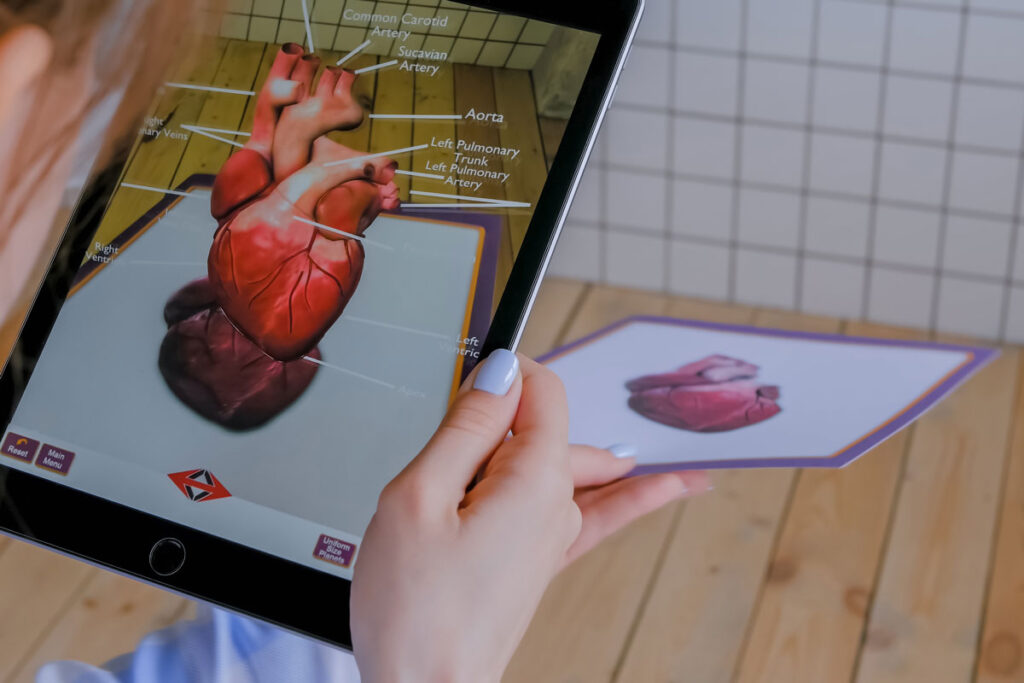What is augmented reality (AR)?
Augmented reality is a technology that overlays digital information onto the real world, thereby creating an interactive experience.
AR has been around for decades – but it wasn’t until the rise of smartphones that the technology became widely accessible. AR is now used in a variety of industries, including healthcare, to display (otherwise potentially-complex) information in a way that is easily accessible, engaging, and educational.
For instance, with AR, surgeons can superimpose images of a patient’s anatomy onto the area being operated on, giving them a better understanding of what’s happening inside the body. AR could also be used to provide patients with educational resources, such as virtual tours of their anatomy or interactive explanations of medical procedures.
And, of course, augmented reality in pharma has the potential to revolutionise the way medical students learn about nuanced equipment, concepts, and procedures.
AR vs VR: What’s the difference?
AR and virtual reality (VR) are often used interchangeably, and both fall under the mixed reality (MR) umbrella, but they are not the same thing.
VR immerses users in a completely virtual environment, with the aid of hardware such as a wearable headset; while AR enhances the real world by overlaying digital information onto it, utilising equipment such as a smartphone or tablet.
Whether AR or VR, mixed reality can improve medical training in many ways.
It is particularly useful for education as it allows for the visualisation of medical procedures and anatomy without the need for equipment or cadavers.
The role of AR in medical education
AR is changing the way medical education is being delivered to students and patients.
It allows for interactive, immersive, and engaging learning experiences, which can help to improve information retention and understanding. For instance:
- AR can be used to teach anatomy and surgical procedures. Medical students can use AR to explore and manipulate 3D models of the human body, allowing for a deeper understanding of anatomy, and the ability to practice surgical procedures in a virtual environment.
- AR can also be used to educate patients about their health conditions and treatment options. Patients might use AR to visualise the effects of treatments, such as surgeries or drug therapies, on their bodies. This helps patients to understand their conditions better, make informed decisions about their care, and improve their health outcomes.
Whatever the target audience, expertise with AR and medical animation is vital in helping healthcare educators achieve high levels of engagement and information retention for their learners.










